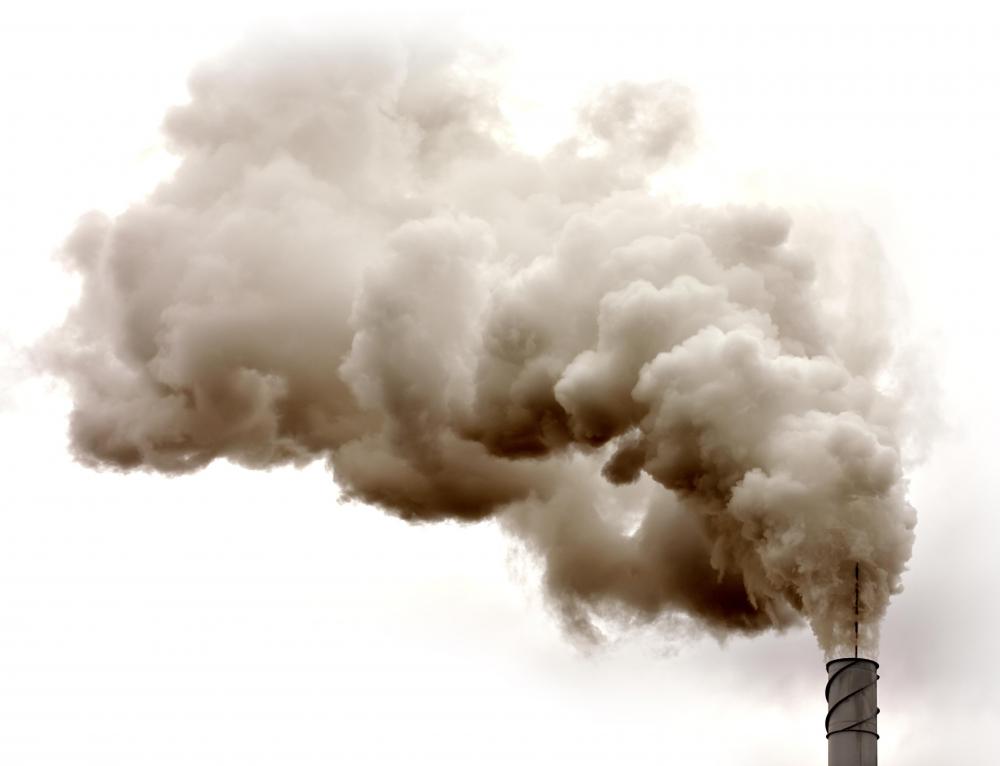At WiseGEEK, we're committed to delivering accurate, trustworthy information. Our expert-authored content is rigorously fact-checked and sourced from credible authorities. Discover how we uphold the highest standards in providing you with reliable knowledge.
What are the Different Acid Rain Causes?
Acid rain is a broad term that describes low pH precipitation that combines with acidic particles in the air, and gets deposited on land and in waters. The primary cause of acid rain is sulfur that reacts, in the atmosphere, to become sulfur dioxide. The major source of this sulfur is coal-burning power plants, while secondary acid rain causes for sulfur can be natural, such as volcanoes and bacterial activities. Nitrogen oxides are the other major cause of acid precipitation. These gases usually result from the burning of fossil fuels, particularly in power plants and automobiles.
Generally, normal rain tends to be somewhat on the acidic side, with a pH of less than 7. The introduction of acidic molecules from acid deposition, including precipitation and the fall of the particles themselves, can greatly lower the pH of the water and surrounding soils. These acid rain effects can be quite devastating to aquatic life, soil ecology, and to forests — particularly in mountainous areas. Acid rain causes accelerated the erosion of many hard substances, like metal and stone, resulting in rapid degradation of historical structures, and artworks that have withstood the elements for long periods of time.

The majority of acid rain causes come from pollution generated by the burning of fossil fuels. Much of the coal burned to generate electricity contains sulfur. When burned in a power plant, this sulfur enters the atmosphere and reacts with oxygen to form sulfur dioxide. Some municipalities have introduced large smokestacks onto their power plants to avoid pollution in their communities. This results in the pollutants entering the atmosphere at higher levels, and contributing to acid rain problems over a wider area.

There are also natural sources of sulfur that contribute to acid precipitation. Such organic acid rain causes include volcanoes, which produce about one-tenth the amount of sulfur produced by human activities. Wildfires are another source of sulfur, as are bacterial activities on land and in water. Phytoplankton produce sulfur emissions, and part of the characteristic smell of the ocean is due to such sulfur compounds.

Another major source of acid rain is nitrogen oxide compounds, which react in the atmosphere to form nitric acid. Such chemicals are becoming a greater cause for concern, as more controls are imposed on sulfur use. These compounds are produced when any fossil fuels are burned, including coal in power plants. Automobiles are also a major source of nitrogen oxides. As automobile usage increases throughout the world, the production of these compounds grows.

One of the acid rain causes is ammonia, a different nitrogen-containing compound that also ends up in the atmosphere. It is produced as a waste product of livestock production. Livestock raised by humans are also a big contributor to acid rain. Electrical activity from lightning also adds to acidic nitrogen to the atmosphere.
AS FEATURED ON:
AS FEATURED ON:














Discussion Comments
Acid rain is a concern in many nations throughout the world, and there are measures being taken to reduce the significance of the problem. Many countries now require energy producers to clean and use filters in smoke stacks to reduce the release of harmful chemicals and compounds into the atmosphere.
And, though it doesn't seem to be happening quickly enough, more countries are taking measures to slow the global warming trend and thus reduce acid rain.
@Laotionne - You are in no direct danger from acid rain. Standing in acid rain or swimming in a body of water that contains acid rain is not likely to be any more dangerous than standing beneath or swimming in regular rain water.
There are indirect dangers associated with acid rain, but maybe the most important aspect of the rain is that it is a warning sign regarding the harmful substances in our atmosphere. The sulfate and nitrate particles that lead to the acid rain are very harmful to humans, animals and plants.
After reading the article, I have a better understanding of what causes acid rain to form. I guess my major concern now is how dangerous is acid rain? I mean, should I be concerned about being caught in a shower of acid rain?
Post your comments